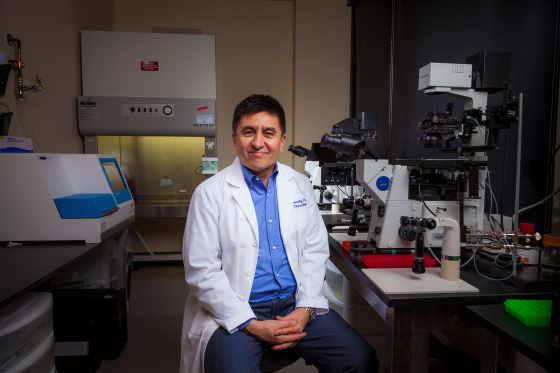In the News
Long-term study of Mitochondrial Replacement Therapy finds no adverse health effects
In December 2020, a decade after the birth of the first primates born with the aid of a gene therapy technique designed to prevent inherited mitochondrial disease, a careful study of the monkeys and their offspring reveals no adverse health effects.
Mitochondrial replacement therapy (MRT) shown to be safe in monkeys. Drug Target Review
First Safe Repair of Human Embryos
A ground breaking discovery by Shoukhrat Mitalipov, Ph.D., was reported in Nature (2017) and verified one year later (2018), the initial confirmation that a dangerous genetic defect can in theory be erased. Science News editors identified "CRISPR gene editing moves into humans, spurs debate" as their Number 2 story of 2017 - @ScienceNews' top stories of 2017! #SNTop10
In Breakthrough, Scientists Edit a Dangerous Mutation From Genes in Human Embryos. NY Times
First U.S.-based group to edit human embryos brings practice closer to clinic. Science
Scientists Precisely Edit DNA In Human Embryos To Fix A Disease Gene. NPR
Scientists take a harder look at genetic engineering of human embryos. Wired
CBS's 60 Minutes included Shoukhrat Mitalipov and his groundbreaking work in their segment about CRISPR.
CBS's 60 Minutes Overtime included a segment with our physician collaborator, Dr. Paula Amato.
Human embryos edited to stop disease. BBC
Profiles in precision medicine
Gene-Editing Technique in Human Embryos Draws Skepticism. The Wall Street Journal
New research provides key insight about mitochondrial replacement therapy
A discovery published in 2016 may unlock the answer to a vexing scientific question: How to conduct mitochondrial replacement therapy, a new gene-therapy technique, in such a way that safely prevents the transmission of harmful mitochondrial gene mutations from mothers to their children.
Hello mothers, hello father. The Economist
For women with mitochondrial diseases, a step closer to preventing transmission. STAT
Human embryo experiment shows progress toward 'three-parent' babies. The Washington Post
First he pioneered a new way of making life. Now he wants to try it in people. STAT: In the Lab
Technique could increase success of infertility treatment
Families struggling with infertility or a genetic predisposition for debilitating mitochondrial diseases may someday benefit from a breakthrough in 2016 led by scientists at OHSU and the Salk Institute for Biological Studies.
Egg 'nobbles' can be used to create embryos, say scientists in fertility breakthrough. The Telegraph
Fertility success may get boost from new research. The San Diego Tribune
Human Embryonic Stem Cells Cloned via Somatic Cell Nuclear Transfer (SCNT)
In 2013, Dr. Mitalipov and his colleagues developed a new process to create human embryonic stem cells from a patient’s skin cells, a discovery that could lead to treatments for a vast range of conditions caused by diseased or injured cells. The discovery was named among the top 10 scientific breakthroughs of the year by Nature, Science, Time, Discover and National Geographic.
Patient-Specific Human Embryonic Stem Cells Created by Cloning. Scientific American
TIME Health Care 50

Designing Disease-Free Embryos
The biologist from Oregon Health &Science University shocked people in 2017 when he repaired a genetic mutation causing heart disease in dozens of human embryos. (The embryos were destroyed as per ethical requirements of the experiment.) He used a controversial gene-editing technique called CRISPR that has yet to be proven safe and effective for treating human disease, and critics questioned his results. But this year, Mitalipov defended his findings after re-analyzing the DNA from the embryonic cells, and other groups have reported similar results using CRISPR to repair the mutation in mouse embryos. Mitalipov says he also tested the technique with inherited mutations that cause other diseases, with similar repair success. He sees his studies as the first step toward IVF gene therapy, in which researchers can repair inherited genetic diseases in IVF embryos before they are implanted in the womb. —Alice Park